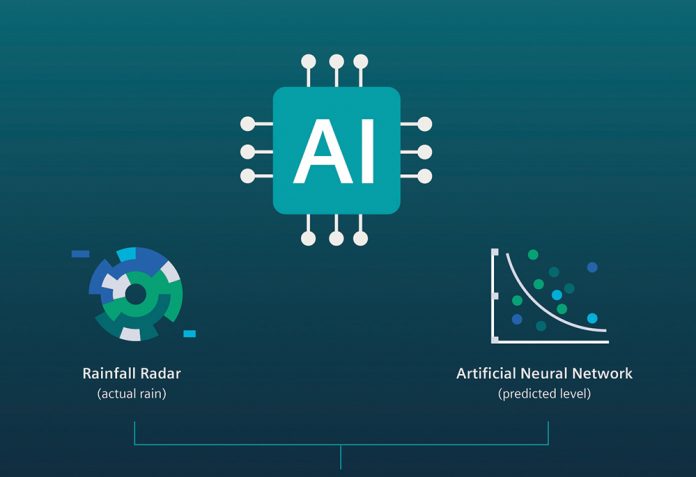Yorkshire Water is expanding its use of artificial intelligence (AI) to predict blockages within its sewer network and reduce pollution risks.
A successful pilot of a solution co-created by Yorkshire Water, Siemens and The University of Sheffield has been completed and will now be rolled out to Yorkshire Water’s network of more than 2,000 combined sewer overflows (CSOs).
Combined sewers carry both foul water from homes and businesses as well as rainwater which falls onto impermeable areas such as paved areas, roofs and highways. As the weather can be unpredictable, CSOs are permitted on sewer networks to reduce the pressure on sewers during heavy rainfall events and stop the system from backing up and flooding homes and gardens by allowing heavily diluted wastewater to be discharged into watercourses.
The integrated sensing, communication, analytics and reporting solution works by using sensors to feed water level data into SIWA Blockage Predictor, an application on Siemens’ cloud-based, open Internet of Things (IoT) operating system, MindSphere.
The performance of the sewer network is analysed in real time and predicts problems like network blockages before they happen, enabling Yorkshire Water to quickly investigate the predicted blockage and prevent them developing into sewage pollution in the environment.
Analysis of 21,300 days of data by the University of Sheffield found the blockage predictor can provide up to two weeks’ notice of problems within the sewer network and identify 9 out of 10 potential issues – three times more successful than existing pollution prediction processes, while reducing the number of false positive alerts by 50%.
Heather Sheffield, integrated planning and central control manager at Yorkshire Water said: “Much of our network in Yorkshire is combined, taking both waste from toilets and sinks in home and surface water from rainfall. Periods of prolonged or intense rainfall can significantly increase the flows in our network and there is a risk of sewage flooding in homes, the environment, and the potential for damage at wastewater treatment works.
“This challenge is compounded by population growth, climate change and consumer behaviour which puts non-flushable items like wipes into sewers, causing or accelerating blockages.
“Reducing intermittent discharges from CSOs is a key priority for us and our partnership with Siemens illustrates Yorkshire Water’s commitment to investing in cutting-edge technology to reduce pollution incidents by 50%, a key goal of our Pollution Incident Reduction Plan 2020-2025.
“Our customers expect us to use the latest technologies. This solution, developed in partnership with Siemens and the University of Sheffield, will change our visibility of the sewer network and improve how we identify and tackle blockages.
“Rolling out the solution to 2,000 assets across the entire county will have a significant role in reducing the number of pollution incidents, which can have a negative impact on the environment, as well as increasing our efficiency and providing improved value to our customers.”
The innovative solution recently won the Data Analytics, Cloud and AI Project of the Year at the 2021 Water Industry Awards.
Steve Hanslow, head of water for Siemens Digital Industries UK, said: “The challenge of moving from a Proof of Concept to scale are considerable. Through partnership we have been able to develop a solution that is secure, scalable, cost effective and can be deployed at pace.
“Keeping sewers free from blockages and reducing river pollution is a wide-ranging and complex issue, and Siemens is happy to help the water industry to meet the technological challenge.”
Siemens is now engaging with water companies to support the ambitions of Water UK, the trade association, to eliminate pollution incidents in the sewer network by 2050.
Adam Cartwright, Head of IoT Application Delivery at Siemens, added: “SIWA Blockage Predictor is a step change in how water companies can avoid pollution incidents.
“The AI can work on existing or new sensors in the network. Integrated reporting of spills and overflow events will support water companies as they rise to the challenge set by the Storm Overflows Taskforce for greater transparency and open data.”



